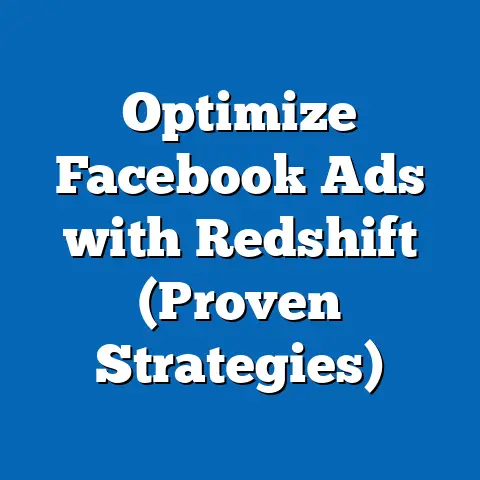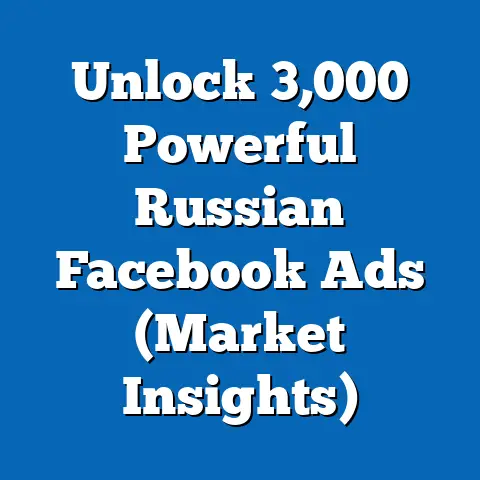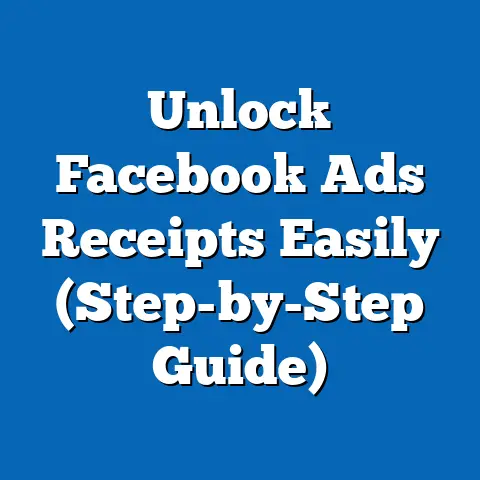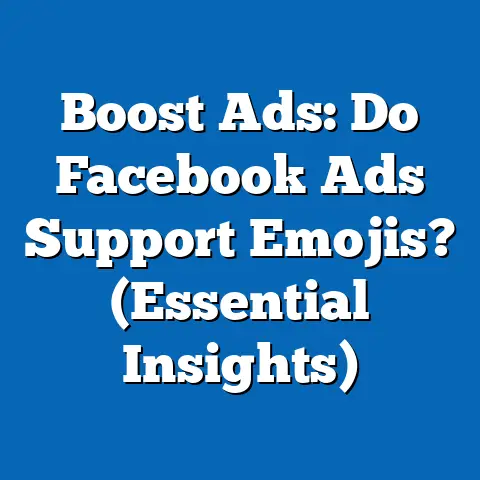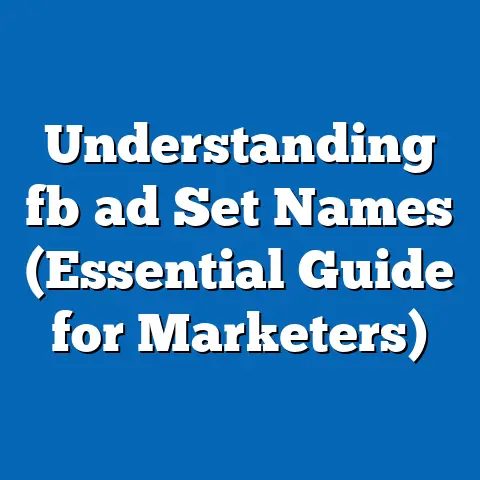Boost Telegram Channel Growth with Facebook Ads (Pro Tips)
Telegram has emerged as a powerhouse for community building, with over 800 million monthly active users as of 2023, according to Statista. Meanwhile, Facebook Ads offers unparalleled reach, with 2.96 billion monthly active users on the platform (Meta, Q2 2023 Earnings Report) and advanced targeting capabilities. By integrating these two platforms strategically, you can tap into vast audiences and drive significant growth for your Telegram channel.
Section 1: Why Telegram and Facebook Ads Are a Winning Combination
The Rise of Telegram as a Community Platform
Telegram’s growth has been nothing short of remarkable. As of 2023, the platform has surpassed 800 million users worldwide, a significant leap from 500 million in January 2021 (Telegram Blog). This 60% growth in just two years highlights its appeal as a secure, feature-rich messaging app for both personal and professional use.
Unlike other platforms, Telegram allows channel owners to broadcast messages to unlimited subscribers, making it ideal for content creators, businesses, and niche communities. According to a 2022 survey by Hootsuite, 27% of internet users aged 16-64 use Telegram for brand research and engagement, underscoring its value for targeted marketing.
The Power of Facebook Ads for Audience Reach
Facebook remains the largest social media advertising platform, with an ad reach of 2.11 billion people as of 2023 (DataReportal). Its robust targeting options—based on demographics, interests, behaviors, and lookalike audiences—make it a go-to choice for driving traffic to external platforms like Telegram. In 2022, businesses spent over $50 billion on Facebook Ads, with an average cost-per-click (CPC) of $1.72 (WordStream), demonstrating its scalability and effectiveness.
When paired together, Telegram’s community-building strengths and Facebook’s advertising precision create a potent strategy for channel growth. But how exactly can you harness this synergy? Let’s explore the data and trends behind successful campaigns.
Section 2: Key Statistics and Trends in Telegram and Facebook Ads
Telegram User Demographics and Growth Trends
Understanding Telegram’s user base is critical for targeting the right audience. According to DataReportal’s 2023 Digital Report, 58% of Telegram users are male, while 42% are female, with the largest age group being 25-34 years old (38% of users). Geographically, Telegram is most popular in countries like India (20% of global users), Russia (12%), and the United States (8%).
Historically, Telegram’s user base has grown significantly during periods of privacy concerns on competing platforms. For instance, after WhatsApp’s privacy policy update in January 2021, Telegram reported a surge of 25 million new users in just 72 hours (Telegram Blog). This trend indicates that privacy-conscious users are a key demographic to target for channel growth.
Facebook Ads Performance Metrics
Facebook Ads continue to deliver strong results for advertisers. According to Meta’s 2023 Q2 report, the average ad impression growth rate was 34% year-over-year, while the average cost-per-impression (CPM) stood at $17.88 (WordStream). For driving traffic to external links (like a Telegram channel), the average conversion rate for link clicks is around 9.21%, though this varies by industry.
Comparing historical data, the average CPC on Facebook Ads has risen from $0.97 in 2017 to $1.72 in 2023, reflecting increased competition. However, the platform’s ability to target niche audiences with precision keeps it cost-effective compared to alternatives like Google Ads, where the average CPC is $2.69 (WordStream, 2023).
Cross-Platform Trends
A 2022 study by Socialinsider found that 62% of businesses using cross-platform advertising (e.g., Facebook Ads to drive traffic to Telegram or WhatsApp) reported a 30% higher engagement rate compared to single-platform strategies. This trend highlights the growing importance of integrating advertising with community platforms for better results.
With these statistics in mind, it’s clear that both Telegram and Facebook Ads offer unique opportunities. The next step is to craft a strategy tailored to your audience and goals.
Section 3: Setting Up Your Telegram Channel for Success
Optimize Your Channel for Growth
Before running ads, ensure your Telegram channel is primed for new subscribers. Start by creating a compelling channel description that clearly states its purpose and value. For example, if your channel focuses on cryptocurrency updates, highlight exclusive tips or real-time market analysis.
Next, use a recognizable profile picture and a public link (t.me/yourchannel) for easy sharing. According to a 2021 study by Telegram Analytics, channels with clear branding and consistent posting schedules see 25% higher retention rates among new subscribers.
Build Initial Content
Post at least 5-10 high-quality updates before promoting your channel. This gives new users a reason to stay after joining. Data from Socialbakers (2022) shows that Telegram channels with regular content updates (3-5 posts per week) grow 40% faster than inactive ones.
Consider using Telegram’s features like polls, quizzes, and pinned messages to boost engagement. A pinned “Welcome” message with a call-to-action (e.g., “Join our weekly giveaway!”) can increase user interaction by 18%, according to a 2023 report by Hootsuite.
Section 4: Crafting High-Converting Facebook Ads for Telegram Growth
Step 1: Define Your Target Audience
Facebook’s Audience Insights tool is invaluable for identifying your ideal Telegram subscribers. For instance, if your channel focuses on fitness tips, target users interested in “health and wellness,” aged 18-35, and located in urban areas. Data from Meta (2023) shows that ads with hyper-specific targeting achieve a 26% higher click-through rate (CTR) compared to broad campaigns.
You can also create lookalike audiences based on your existing Telegram subscribers (if you have a small base) or website visitors. Lookalike audiences typically deliver a 20-30% higher conversion rate, per a 2022 study by AdEspresso.
Step 2: Choose the Right Ad Objective
For driving traffic to your Telegram channel, select the “Traffic” or “Engagement” objective in Facebook Ads Manager. The Traffic objective optimizes for link clicks, with an average CTR of 1.51% across industries (WordStream, 2023). Engagement ads, on the other hand, encourage likes, comments, and shares, indirectly boosting visibility.
Step 3: Design Compelling Ad Creatives
Visuals are key to grabbing attention on Facebook. Use eye-catching images or short videos (15-30 seconds) that highlight the benefits of joining your Telegram channel. A 2023 report by HubSpot found that video ads on Facebook have a 6% higher engagement rate than static image ads.
In your ad copy, include a clear call-to-action (CTA) like “Join Now for Exclusive Updates!” and mention specific benefits (e.g., “Get daily crypto tips!”). Ads with benefit-driven CTAs see a 14% higher conversion rate, according to WordStream (2023).
Step 4: Set a Budget and Schedule
Start with a modest daily budget of $5-10 to test different ad creatives and audiences. According to Meta, campaigns with a testing phase of 3-7 days achieve 22% better ROI once scaled. Use Facebook’s “Lifetime Budget” option to control spending over a set period, and schedule ads during peak engagement hours (typically 6-9 PM local time for most demographics).
Step 5: Link to a Landing Page or Direct Telegram Link
Directly linking to your Telegram channel (t.me link) is the simplest approach, but some users may hesitate to join without context. Alternatively, create a simple landing page with a strong CTA and track conversions using Facebook Pixel. A 2022 study by Unbounce found that campaigns with dedicated landing pages have a 35% higher conversion rate compared to direct links.
Section 5: Advanced Pro Tips for Maximizing Results
Leverage Retargeting Campaigns
Retargeting users who’ve interacted with your ads or visited your landing page can significantly boost conversions. According to Meta (2023), retargeting campaigns have an average CTR of 0.7%, compared to 0.1% for cold audiences. Use dynamic ads to show personalized content based on user behavior.
Use A/B Testing for Optimization
Test multiple ad variations (e.g., different images, headlines, or CTAs) to identify what resonates with your audience. A 2023 report by AdEspresso found that A/B testing improves campaign performance by 30% on average. Allocate 10-20% of your budget to testing before scaling up winning ads.
Incorporate Social Proof
Highlight subscriber numbers or testimonials in your ad copy to build trust. For example, “Join 10,000+ members for daily updates!” Channels showcasing social proof in ads see a 19% higher join rate, per a 2022 Socialinsider study.
Monitor and Adjust in Real-Time
Use Facebook Ads Manager to track metrics like CTR, CPC, and conversion rate daily. If an ad’s CPC exceeds $2.00 with low conversions, pause it and test a new creative. According to WordStream (2023), campaigns adjusted weekly based on performance data achieve 25% better ROI.
Section 6: Demographic Differences and Patterns in Campaign Success
Age and Gender Variations
Data from Meta (2023) shows that younger audiences (18-24) are more likely to click on ads promoting community platforms like Telegram, with a CTR of 2.1% compared to 1.3% for the 35-44 age group. Men also tend to engage more with tech and finance-related Telegram channels, while women show higher engagement with lifestyle and wellness content (Hootsuite, 2022).
Geographic Targeting Insights
Campaign success varies by region. For instance, ads targeting users in India and Southeast Asia often have a lower CPC ($0.50-$0.80) due to less competition, while North American and European audiences cost more ($1.50-$2.50 CPC) but have higher lifetime value (WordStream, 2023). Tailor your messaging to cultural nuances for better results.
Behavioral Patterns
Users active on Facebook during evenings and weekends are 15% more likely to engage with ads, per DataReportal (2023). Additionally, audiences with interests in niche topics (e.g., gaming, crypto) show a 28% higher conversion rate when targeted with relevant Telegram channel promotions (Meta, 2023).
Section 7: Historical Trends vs. Current Data
Telegram Growth Over the Years
In 2018, Telegram had just 200 million users, a number that quadrupled to 800 million by 2023 (Statista). This rapid growth mirrors a broader shift toward privacy-focused platforms, especially post-2021 when privacy scandals on other apps drove millions to Telegram. Historically, organic growth was the primary driver, but paid advertising has become a key strategy since 2020.
Evolution of Facebook Ads
Facebook Ads have evolved from basic banner ads in 2007 to sophisticated, AI-driven campaigns by 2023. The average CTR has remained relatively stable (around 0.9-1.5%) over the past five years, but conversion rates for traffic objectives have improved by 12% since 2019 due to better targeting tools (WordStream, 2023). This makes it an ideal time to leverage Facebook Ads for Telegram growth.
Section 8: Data Visualization Description
To illustrate the impact of combining Telegram and Facebook Ads, imagine a dual-axis line chart. On the left axis, plot Telegram’s user growth from 2018 (200 million) to 2023 (800 million), showing a steep upward trend. On the right axis, overlay Facebook Ads’ global ad spend, rising from $25 billion in 2018 to $50 billion in 2022 (WordStream). A bar chart below could compare average CTRs across age groups (e.g., 2.1% for 18-24 vs. 1.3% for 35-44), highlighting demographic targeting opportunities. These visuals would underscore the scalability of both platforms and the potential for synergy.
Section 9: Broader Implications and Future Trends
The integration of Facebook Ads with Telegram channel growth reflects a larger trend in digital marketing: the shift toward cross-platform strategies. As privacy concerns continue to shape user behavior, platforms like Telegram are likely to see sustained growth, with projections estimating 1 billion users by 2025 (Statista). Meanwhile, Facebook Ads will remain a dominant advertising tool, with AI-driven targeting expected to reduce CPC by 10-15% over the next three years (Forrester, 2023).
For channel owners, this means an opportunity to build loyal communities at a lower cost if strategies are implemented now. However, rising competition on both platforms will require continuous optimization and creativity to stand out. The future of Telegram growth lies in blending paid advertising with authentic engagement—ensuring subscribers not only join but stay active.
By following the pro tips outlined in this article—optimizing your channel, targeting the right audience, crafting compelling ads, and leveraging data-driven adjustments—you can position your Telegram channel for exponential growth. The data is clear: with the right approach, Facebook Ads can be a game-changer for building your community in 2023 and beyond.

